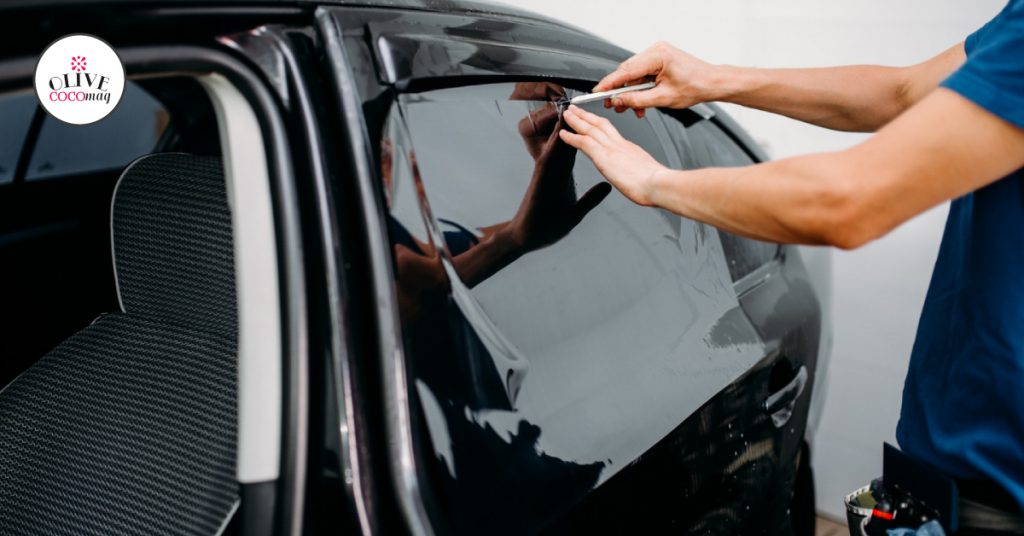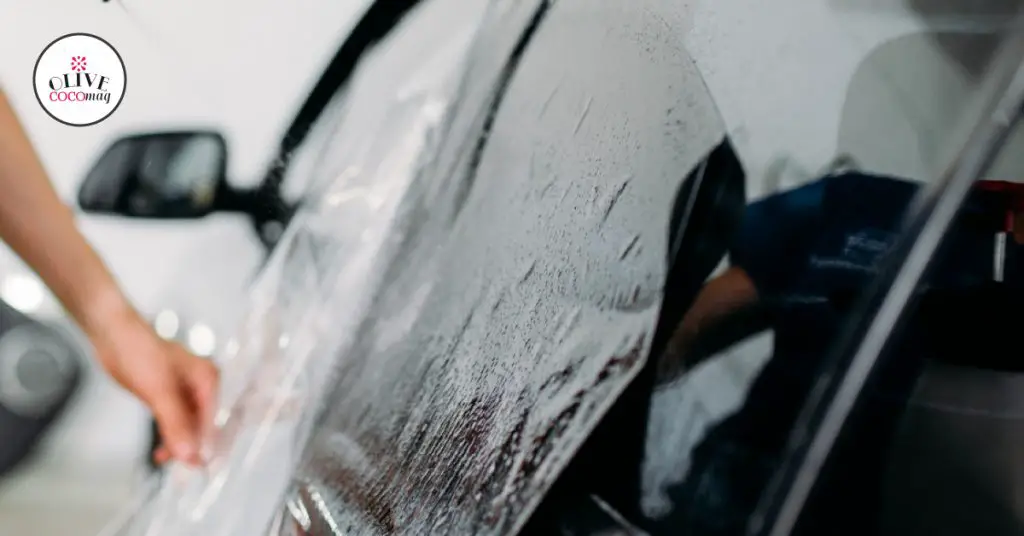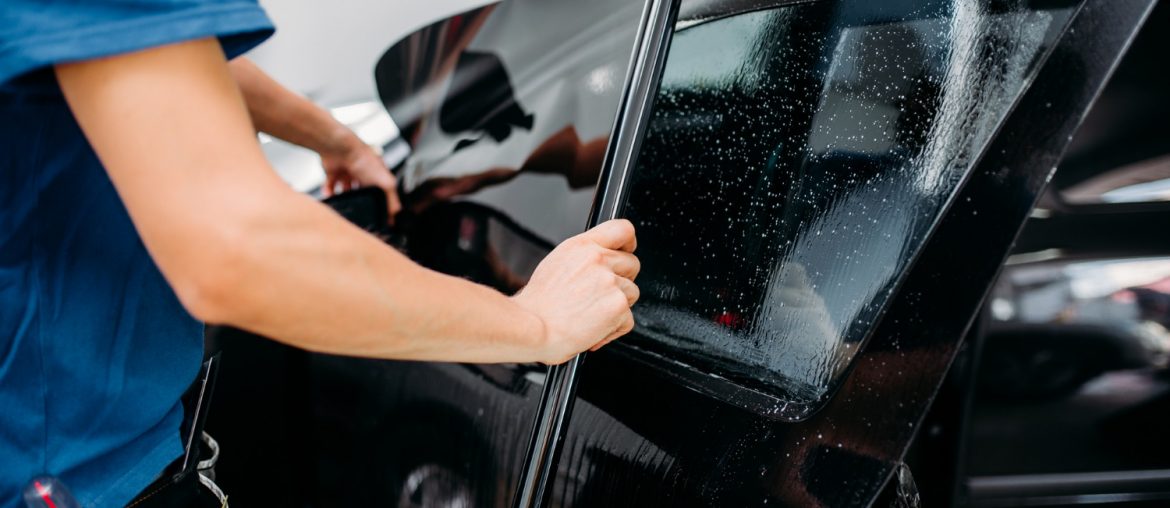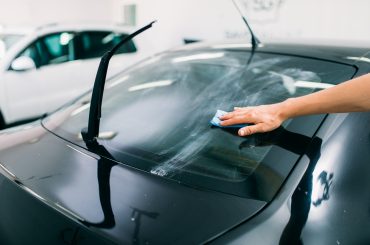Retinting car windows are necessary because the films cannot be repaired once they are damaged. As the films are too thin and delicate, the only option is to retint car windows. You cannot even patch a section of tint as the new tint would be of a different color when compared with the worn-out film. This would make your vehicle look cheap and damage its appearance.

Table of Contents
Why Should You Retint Car Windows?
Retinting car windows are done for two specific reasons. Retinting windows are necessary when your window film is damaged. Another reason that you might want to retint car windows is that you need additional darkness on the window. If the tint is in good condition, an additional film of tint can be applied over it to make it darker. However, before you attempt this, make sure to know your state’s window tint laws. Find the legal restrictions in visible light transmission of each state by referring to Window Tint Laws in the U.S. by State.
When Should You Retint Car Windows?

The sun damage would result in cracking and peeling away of window films. Sometimes the tint gets scratched and torn by debris or sharp edges. So very often, the window tint would not last as long as the lifespan of the vehicle. Retinting car windows should be done when the following symptoms appear.
Fading or Purpling
This is an indication of a worn-out window film and that you need to retint your car windows. Tint films change their color due to direct exposure to the sun. This happens over time, and the efficiency of the window tint in blocking harmful radiation is reduced due to this. However, quality films such as carbon or ceramic tints are highly durable and less prone to fading and damaging.
Peeling
Once the adhesive starts to lose its ability, the window tint starts to peel off. This is mostly due to the UV rays that deteriorate the adhesive nature of the glue. So once the window film shows signs of peeling, then it’s high time to replace your window tint. Before you replace, you should know how to remove window tint.
Bubbling
Appearing of air bubbles or bulges occurs towards the end of the lifespan of your car window tint. If this occurs a few years earlier than you expected, then there is a higher probability that your window tint film was not installed correctly in the first place. Another reason might be that your window film was not of high quality than you expected. Since bubbled window tint is an indication of damaged film, you should retint car windows as soon as possible. Else, obstructed view through these films can even cause risky situations while driving.
How to Retint Car Windows?

Before retinting your car window, you first need to until car windows. Removal of existing window film might be challenging if you are not aware of how to do it correctly. Afterward, you can apply a new window film to your car windows. This can be done by yourself if you know how to tint car windows. Else, you can even get help from a professional window film installer.
However, you must know the types of window tint so that you can easily choose what suits your vehicle. If you are on a tight budget, knowing how much to tint car windows is also necessary to find an affordable window tint. Finding a good window film would help you reduce glare while driving and avoid strain on your eyes. It would help you avoid harmful UV radiation and also feel less heat inside due to the blocking of IR rays.
Can You Untint Windows?
Unstinting car windows can be done without scratching the window glass if you use careful methods. Generally, window film removal is done by heating the window film, digging up a corner, and gently pulling off the film. Ammonia spray can also be used to break the performance of the adhesives. You can learn more about how this is done by referring to How to Remove Window Tint. However, if you are not sure about it, it is best left to be done by a professional.
Which is the Better Option: DIY or Pro?

If you have the potential, you can try retinting your windows. But it would include the additional task of removing the current window tint. Since you are not experienced, the required outcome might not be achieved despite spending hours on the effort. You could even damage the new window film in this process.
Hiring a professional technician would assure you that the work is done perfectly without any flaws in installation. No visible bubbles or air pockets would occur in professional installation, and even if they do, you do not need to worry as they undertake the responsibility to get rid of them. You can also get a service warranty from the window film installer. But you would have to spend some money on this than when doing it yourself.
What is the Lifespan of Car Tint?
Most cars would have to be retinted after around five to ten years. But this might vary, depending on the type of window film, the installation quality, and the usage conditions of the vehicle. Inexpensive, low-quality window films would fade away soon, while high-end window films such as nano-carbon ceramic window films would last over ten years. Vehicles that are not subjected to extreme weather conditions and parked indoors would have a longer lifespan for their window tint. Window tint aftercare also plays a major role in determining the longevity of window films.
How Much Does it Cost to Retint a Car Window?

For window film installation, professional window tinting services would charge from $25 to $50 per window. High-quality tint removal services would charge something between $199 and $400 for the entire car. However, both these costs would vary depending on the model of the car and the number of windows. If the entire vehicle is to be serviced, you might even get discounts. You can get all this done for free if you are a pro in handy work so that you can remove the tint and install the film by yourself.








